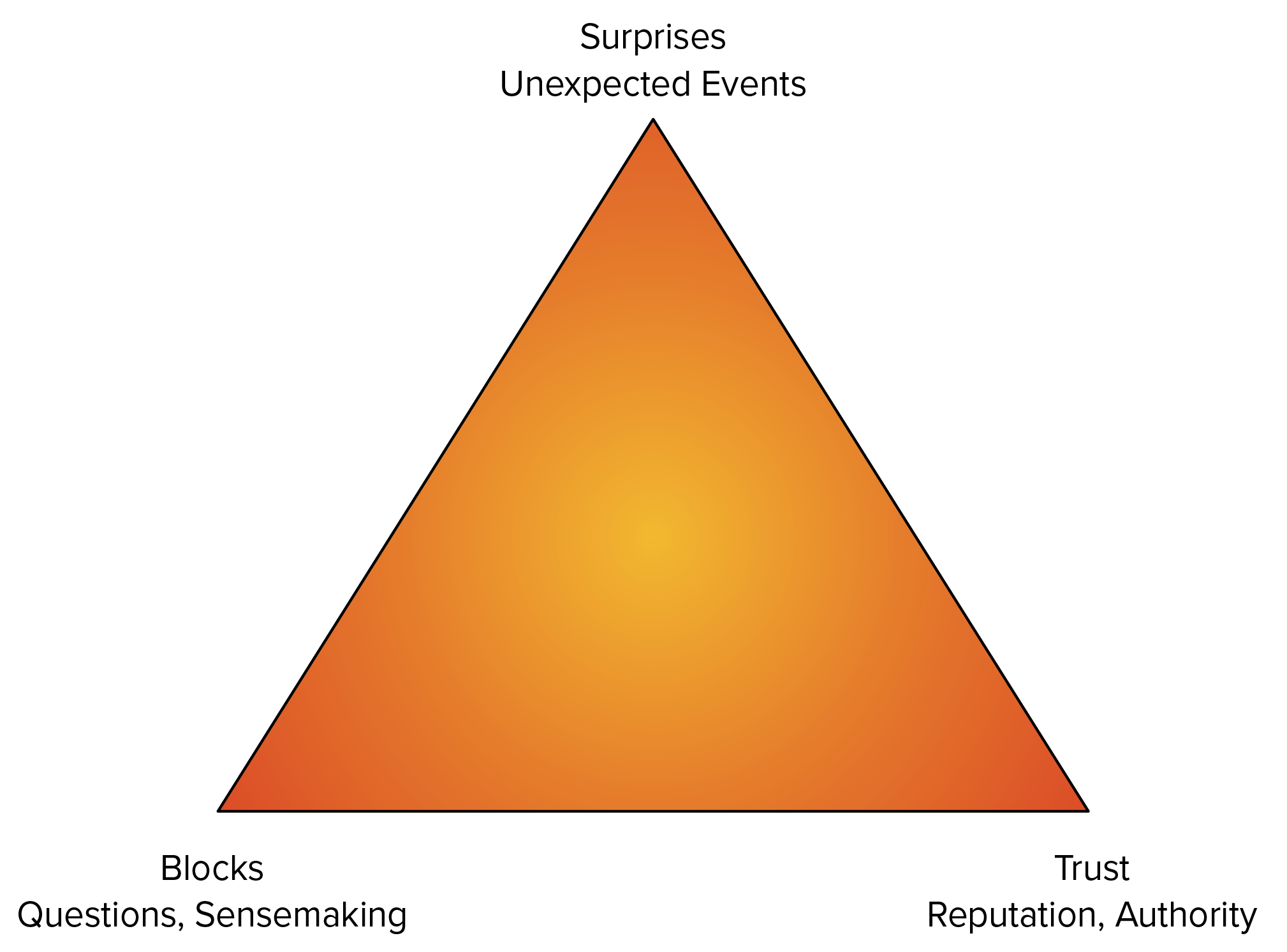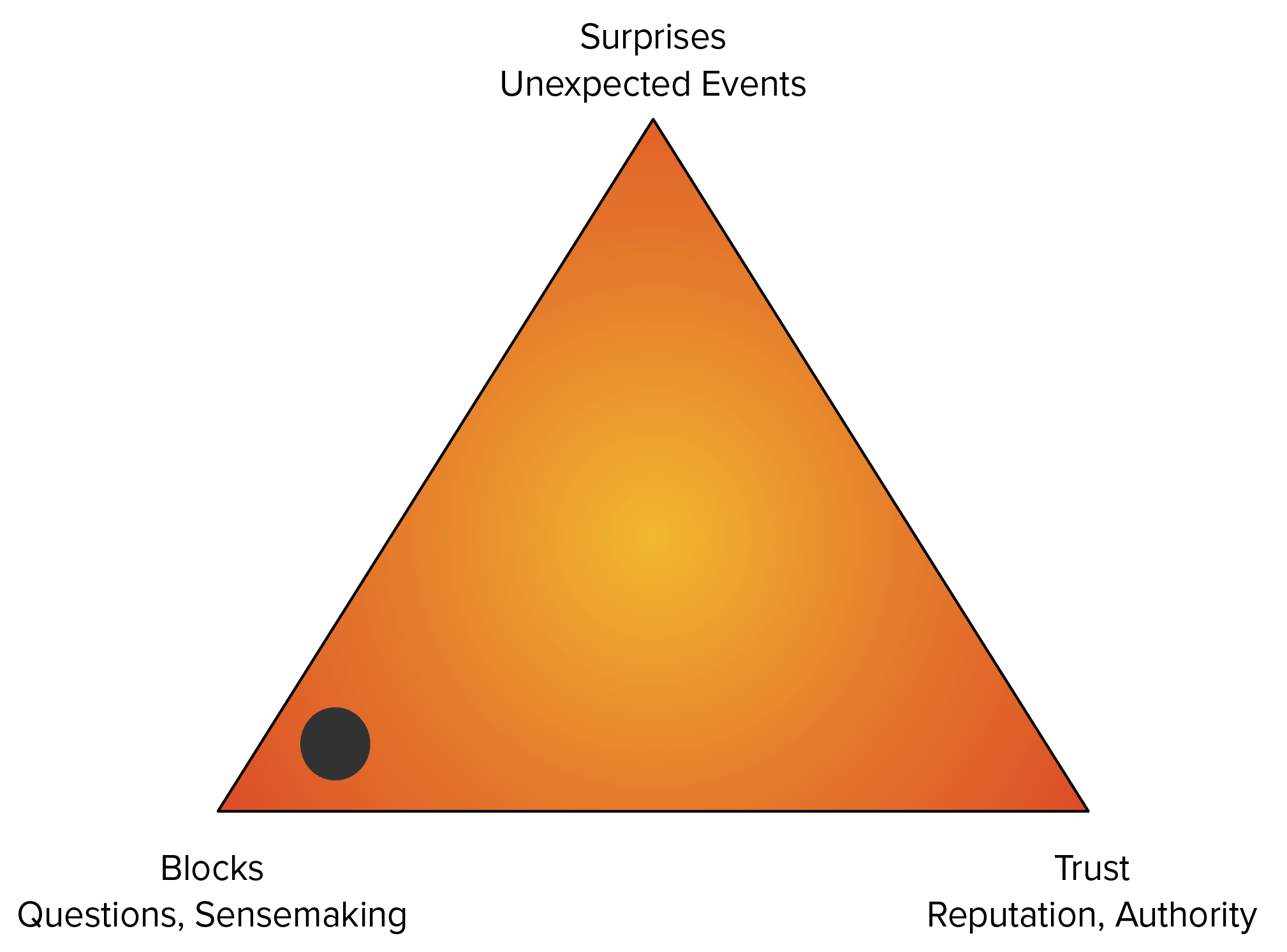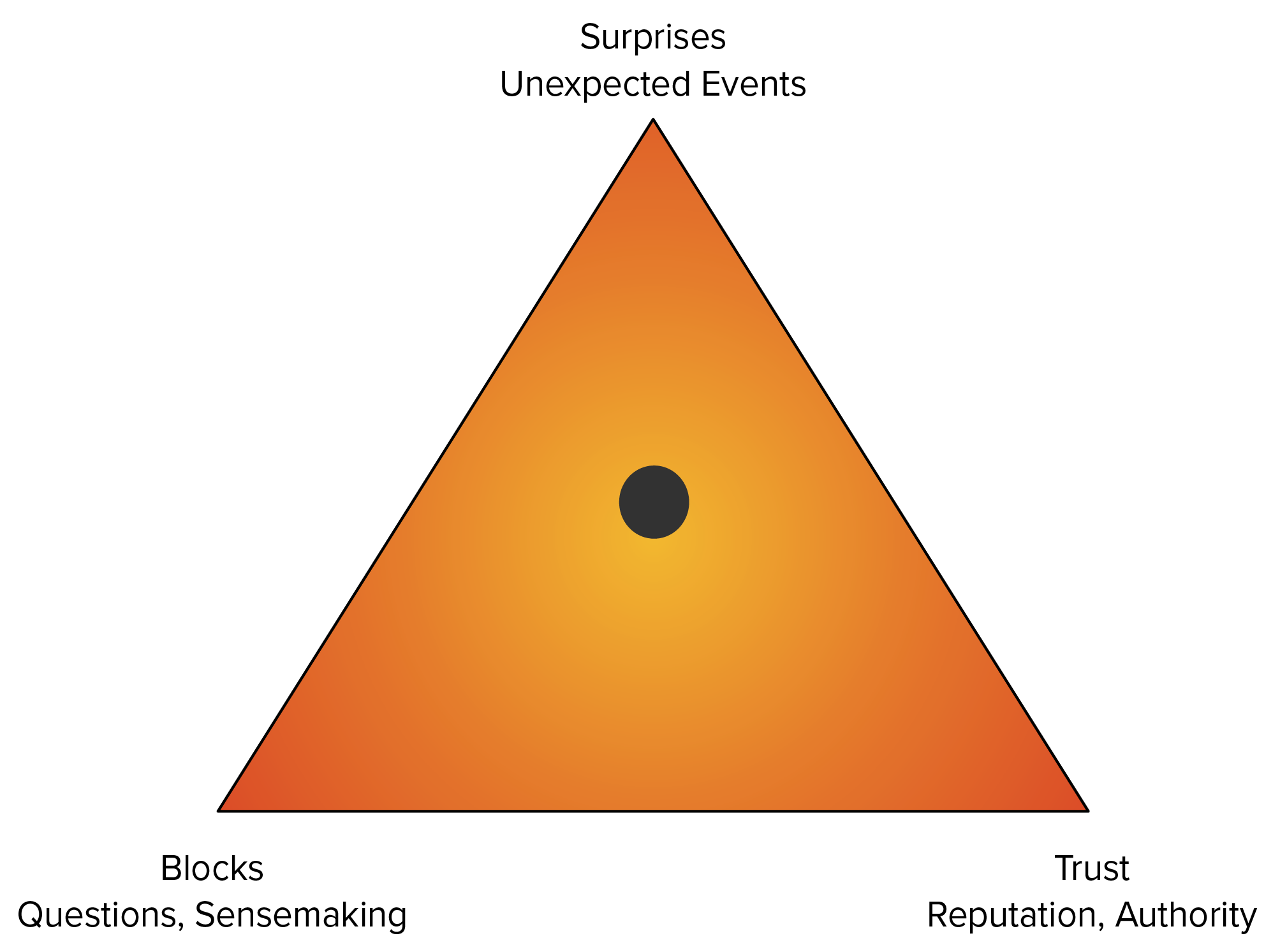How to Identify and Eliminate Meetings That Waste Your Team’s Time
In previous articles, we explored ways to determine the best-fit meeting cadence for your team. An effective meeting cadence means your team is talking often enough to maintain momentum and build solid working relationships, but not so often that they have trouble completing other work.
Looking at the many examples provided in these articles, I hope we can agree that most teams have some meetings which are required to successfully achieve their goals. If we accept that we need at least some meetings, we can reject the lazy idea that we’ll fix our unproductive meeting problem by just cancelling lots of meetings.
Instead, we’ll consider the predictability and interdependence of the work, and plot an appropriate meeting cadence to support it. Talk to your team about your meetings! As Shishir Mehrotra, CEO of Coda, puts it, you should work together to design your meeting system with the goal of ensuring every conversation has a home.
What does it mean for every conversation to have a home?
It means that when team members need to talk about a problem or make a decision, they know when and where they can have that conversation. It means that the conversations that belong in email or chat or a tracking system happen there, and meeting time stays productively focused. It means that people aren’t having their calendars hijacked by any old random meeting their team members might dream up.
Ensuring every conversation has a home means your team wastes very little time in unproductive meetings.
So the first step in creating these homes for your conversations is to identify the best-fit meeting cadence for your team. Then, presuming you have a useful cadence in place, how else might wasted time become a problem?
Time Waster 1: Lack of Meeting Skills
First, anyone who runs an awful meeting is wasting other people’s time, as does anyone who fails to participate when asked. If your meeting leaders aren’t trained to lead productive meetings, you’re highly likely to see lots of unproductive meetings.
Working effectively with others in meetings is a required part of most jobs. This one is easy to fix: train people to do their job.
Time Waster 2: Wrong Cadence
After that, most wasted time comes through a misalignment of the scheduled meeting cadence with the nature of the work.
If your teams have high predictability and low interdependence, they really don’t need to meet very often. Reduce the number of meetings and reduce the number of folks in each meeting to reduce wasted time.
If your teams have low predictability and high interdependence, they need to meet frequently. Create communication predictability by optimizing the process for these meetings, then make them ruthlessly efficient to reduce wasted time.
If your meeting cadence matches the nature of your work and you have decent processes in place and your team is trained in the basics, but you STILL see a lot of time wasted in unproductive meetings, it’s most likely coming from all the ad-hoc meetings popping unpredictably onto the calendar.
Time Waster 3: Ad-Hoc Internal Meetings
The right meeting cadence for your team should eliminate most ad-hoc meetings.
Ideally, team members can predict in advance how much time they’ll spend in meetings each week based on your core meeting cadence, plus a small margin of adjustment. If you’re not getting that kind of predictability, productivity suffers. People can’t reliably plan for the time they need to think, learn, create, and execute on their individual tasks. Too many ad-hoc meetings drag a team down.
If you have an appropriate meeting cadence and you’re still seeing lots of previously unplanned meetings arise every week, it’s important to examine these one-offs to figure out what’s causing them.
Usually, it has to do with:
- Surprises: Something totally unexpected came up that has to be dealt with now.
- Blocks: Someone is stuck and needs help making sense of something.
- Trust: A perceived lack of control, authority, or relationship stability makes someone feel they need a meeting before they’re safe going forward.

Let’s explore some examples.
A. Surprises sound like:
- The government just shut down our industry. What’s our plan?
- Fred quit. We need to re-allocate his work. What’s our plan?
- There was an oil spill in the harbor. What’s our plan?
- Our dream client just approved a multi-year contract out of the blue. What’s our plan?
As you can see, surprises mean that whatever plan you were using before is no longer valid. You need a new plan urgently, and you can’t wait until the next regularly scheduled planning meeting to make it.

Wait, you don’t have a regularly scheduled planning meeting? Or you do, but they’re a month apart? Well, fix that. By proactively scheduling planning/coordinating sessions more frequently, you’ll create a home for all these random re-plan meetings and save your team a bunch of time.
B. Blocks sound like:
- Hey, I need help making sense of what just happened here.
- Can we just jump on a call and talk this through?
- I’m stuck. Can you come help?
Blocks mean that someone feels they can’t make progress on their task without talking to other people. This happens when the task is outside that person’s zone of awareness, competence, or comfort.

This also happens with people who talk to think, and find it both easier and natural to schedule lots of little ad-hoc meetings instead of using written communication or sticking to the pre-agreed schedule.
In healthy teams, you want team members to feel comfortable speaking up when they’re stuck and need help. These meetings become a problem only when one or more team members rely on ad-hoc meetings as their default problem solving tool. In situations where “help me think” meetings become a bad habit, it’s important to:
- Establish prerequisites for any ad-hoc meetings.
For example, you might require the person asking for the meeting to supply a description of exactly why they want to meet and what they hope to achieve. This gives those invited the clarity they need to make the time productive, or an opportunity to send answers by email instead. - Develop the problem-solving capacity of individual team members.
Some people may not yet realize that they have the authority (and responsibility) to find solutions on their own. They may benefit from training and mentorship. - Build in more time for tackling non-urgent requests in your regularly scheduled meetings. More about that below.
C. Reputation/Authority concerns sound like:
- We’d better get Jack to look at this.
- Let’s get in a room and make sure we’re all on the same page.
- Before we sign off, let’s run it by Legal.
- Can we synch up on this? I need to check-in with where you’re at.
These meetings pop up in reaction to a perceived a lack of authority or control.

Perhaps employees don’t want to risk having their decisions reversed, so they schedule a meeting to make sure they get the boss’s approval before they proceed. The boss always has feedback–heck, they were asked for an opinion, so of course they’ll come up with one–and that reinforces the cycle.
Break this bad habit by making the success criteria and decision-making process clear up front, then stick to it. If boss-level approval really is required, build time for that into your cadence.
The other driver for these meetings is a lack of trust. Those with delivery responsibility (but lacking positional authority) don’t trust that their team members are really on track, or that they really understand what’s required.
Others don’t trust that the team understands how valuable they are, so they use meetings to establish control and enhance their reputation. Some promote politics, personal branding, and a bit of interpersonal drama to lend zest to an otherwise dull day.
This dynamic shifts when you work to increase trust and love throughout the team.
- Making work visible increases delivery trust, and reduces the bad assumptions that lead folks to worry about whether their team members are on track.
- Using meeting time to improve personal relationships increases psychological safety and reduces reputation anxiety.
- Learning to communicate more effectively using coaching skills, heart-centered listening, and healthy humor, increases the quality of understanding between team members.
- Better matching people’s work with their strengths, and developing their competence in that work, increases their joy at work.
- Love, of the job and for one another, builds capacity.
Mapping the Impetus for Your Ad-Hoc Meetings
Of course, it’s possible for an ad-hoc meeting to pop up because a few of these factors are working together.
Perhaps your project manager is a “talk to think” kind of person who doesn’t particularly trust the team to stay on task. You’ll end up with lots of extra meetings.

Perhaps the boss often provides feedback that forces the team to re-do a bunch of work, throwing the schedule off and creating the need for an emergency planning session.

Maybe your team is working on projects that are just outside what you know how to do, which means folks get blocked a lot, the plans are pretty worthless, and no one trusts you’ll succeed because you’ve never done this before and have no track record.

Review your calendar for the past month and plot all the ad-hoc meetings on this triangle. Invite a few colleagues to do the same, then compare the pictures that emerge. You should quickly get a sense for the organizational dynamics driving your ad-hoc mania.
With that picture in place, you have the information you need to create targeted meeting improvement experiments. We’ve seen teams solve the ad-hoc, “stuff keeps coming up!” problem at least four different ways.
Each approach worked by finding a new home for their many homeless ad-hoc conversations. In Coda’s case, they created the Bullpen meeting. My team uses a Real-Time Agenda as one part of our weekly meeting. In the future, I’ll share how Zingerman’s and PeopleG2 provide structure for their ad-hoc talk.
As you work to mature your meeting operating system, we’re eager to learn what you create. Share in the comments, or get in touch. We’d love to celebrate your success.
Related Articles
- Why meet? Understanding the Function of Meetings in the Collaborative Workplace
- How often should you meet? Selecting the right meeting cadence for your team.
- Meetings and Productivity: Driver or Drain?
- Why Meeting Flow Models are the Key to Unlocking Your Team’s Meeting Success
- Meeting in Times of Rapid Change and Crisis
- Survey Results: How often do teams meet during a crisis? (Updated July 2020)
- How to Find the Most Productive Meeting Schedule for a Team Like Yours



